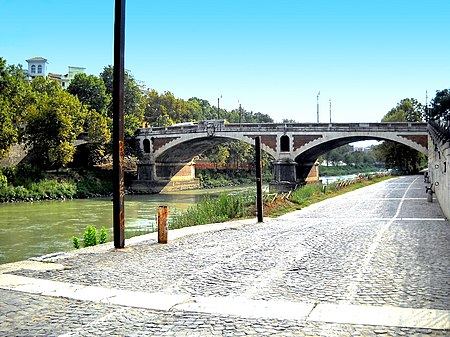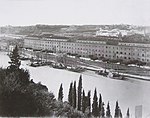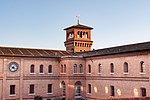Ponte Sublicio
Bridges in RomeRome R. XIII TrastevereRome R. XII RipaRome R. XX TestaccioStone bridges in Italy

Ponte Sublicio, also known as Ponte Aventino or Ponte Marmoreo, is a bridge linking Piazza dell'Emporio to Piazza di Porta Portese in Rome (Italy), in the Rioni Ripa, Trastevere and Testaccio and in the Quartiere Portuense. The most ancient bridge in Rome crossed river Tiber just downstream of the Tiber Island, in correspondence with the former ford that, during the protohistoric age, was a required stop along the north-south way, at the feet of the Aventine Hill. Its building has been ascribed to King Ancus Marcius (642 - 617 BC) by Livy and Dionysius of Halicarnassus.
Excerpt from the Wikipedia article Ponte Sublicio (License: CC BY-SA 3.0, Authors, Images).Ponte Sublicio
Piazza di Porta Portese, Rome Municipio Roma I
Geographical coordinates (GPS) Address Nearby Places Show on map
Geographical coordinates (GPS)
| Latitude | Longitude |
|---|---|
| N 41.883261 ° | E 12.475233 ° |
Address
Ponte Sublicio (Ponte Marmoreo)
Piazza di Porta Portese
00153 Rome, Municipio Roma I
Lazio, Italy
Open on Google Maps










